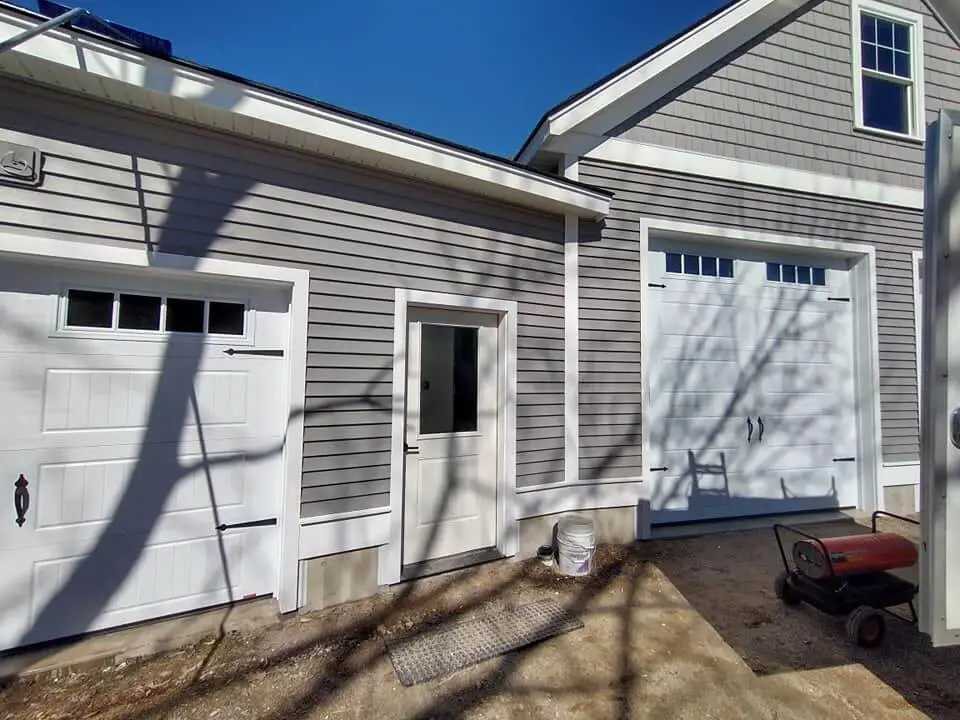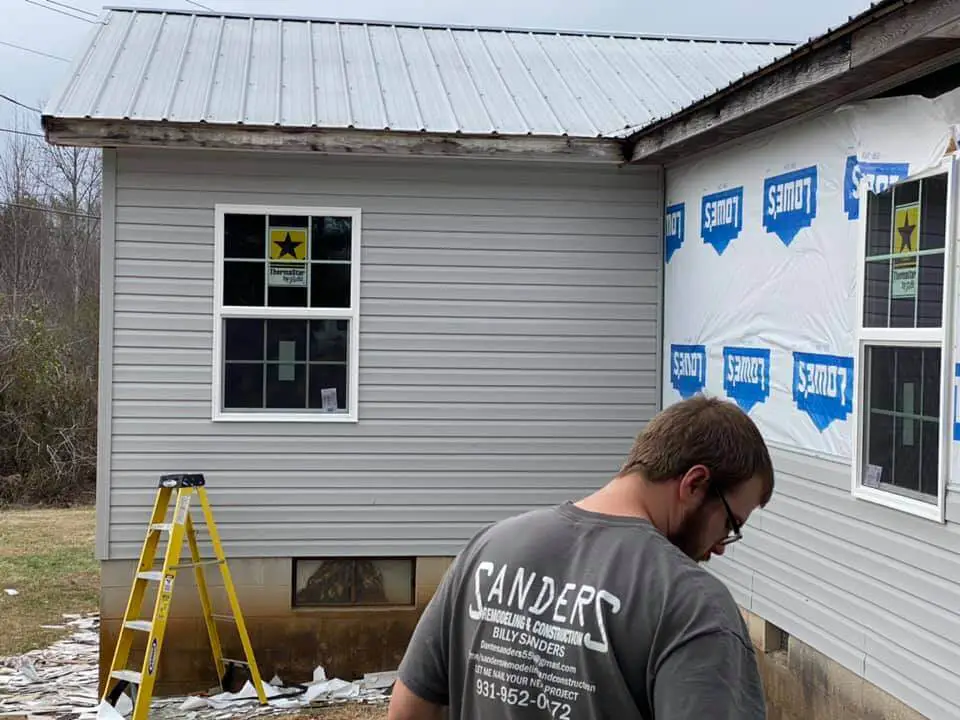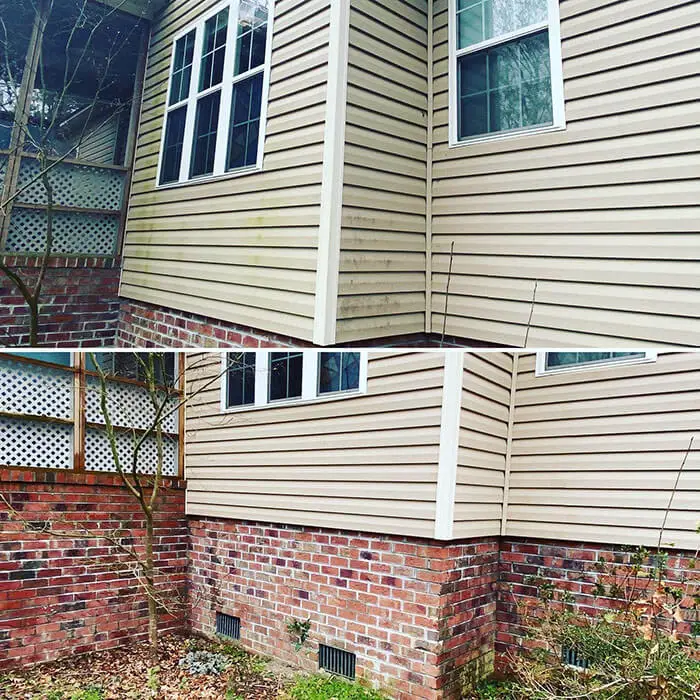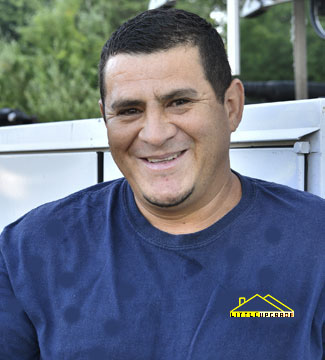A house can sit without siding for a maximum of 6 months, and after that, moisture and pest infestation start, and you will notice the structural issues and underlying materials start decaying, etc. Besides, behind those are a few factors that affect the materials, such as weather conditions in your area and the additional layers you used.
Here is a table to help you understand what might happen depending on a few factors.

| Factors | Affect Start/Exposure Limit |
| Weather and Climate | Minimal (6 months to 1 year)Moderate (3 to 6 months)High (1 to 3 months) |
| Additional/Materials | Wood (1 to 3 months)Vinyl (6 months to 1 year)Brick, Stone, Stucco (1 year or more) |
| Structural Issues | Poor (6 months to 1 year)Fair (3 to 6 months)Still good (1 to 3 months) |
| Moisture Intrusion and Pest Infestation | High (6 months to 1 year)Moderate (3 to 6 months) Minimal (1 to 3 months) |
Quick Jump
3 Crucial Factors Affecting the Duration Without Siding
Many reasons can affect the overall duration of siding, from construction materials and structural integrity to climate and weather conditions. As things can get messy, and you don’t want to lose money or damage more of your materials, you must carefully consider and inspect these things.
Factor #1: Weather
Of course, the overall climate and weather made the top item in the factors list because they significantly impact the duration a house can sit without siding.
To be specific,
- Regions such as Texas, prone to severe weather events like hurricanes, tornadoes, or strong storms, can cause substantial damage to a house’s exterior if left without siding. High winds can dislodge or damage loose materials while flying debris can cause dents or punctures.
- I got some bad news if you live in a rainy area like Alaska or Hawaii, as continuous exposure to rain can lead to water infiltration, causing structural damage, rot, and mold growth. Over time, moisture can seep into the walls, compromising the integrity of the building materials.
- Besides, as for the snowy area, accumulated snow can melt and refreeze, forming ice dams, which can cause water to seep into the house. The freeze-thaw cycle can also accelerate the deterioration of unprotected building materials.
That’s not all! Sunlight and Uv radiation are common regardless of which area you live in, and prolonged exposure to sunlight and UV radiation can fade and deteriorate certain building materials, particularly those more susceptible to UV damage, such as wood or some types of plastics.
Factor #2: Structure Material
We chose different materials for our structure and siding because of our area code, weather conditions, and preferences. And there are now many options for siding material, such as vinyl, wood, fiber cement, brick or stone, stucco, etc.
I won’t bother you with too much information, but here is a table as a gist.
| Materials | Advantages | Considerations |
| Vinyl Siding | # Affordable, low maintenance, durable # Resistant to rot, insects, and fading | # Affected by extreme temperatures and may become brittle over time. |
| Wood Siding | # Versatility, renewable resource # Provides insulation | # Requires regular maintenance # Susceptible to moisture damage, rot, and insect infestation. |
| Fiber Cement Siding | # Resistant to fire, insects, rot, and extreme weather # Low maintenance | # Heavier and more challenging to install # Requires specialized tools, the higher initial cost |
| Metal Siding | # Durable, resistant to fire, insects, and rot # Also, low maintenance and recyclable | # Prone to dents or scratches # Require periodic repainting or touch-ups, which can be affected by corrosion |
| Brick or Stone Veneer | # It provides a classic and elegant look # Durable, fire-resistant, and low maintenance. | # More expensive than other siding materials, it requires professional installation |
| Stucco | # Durable, fire-resistant, provides insulation, customizable textures and colors, and low maintenance. | # Can be susceptible to cracking or water intrusion |
Factor #3: Additional Layers

When deciding how long you can leave your house without siding, it’s important to consider.
Structural integrity is crucial because it’s the foundation that holds everything together. While siding plays a significant role in protecting your house, other layers contribute to its overall stability:
#1 Sheathing: I will start with sheathing and think of sheathing as the backbone of your house’s exterior. It’s typically made of plywood or oriented strand board (OSB) and provides a sturdy base for the siding. Sheathing helps distribute the weight of the siding evenly and also acts as a barrier against moisture and pests. However, it’s important to note that sheathing alone is not a long-term substitute for siding.
#2 Vapor Barrier: The name might sound fancy, but a vapor barrier is a moisture shield. It helps prevent water vapor from seeping into your house’s interior, which can lead to mold growth, rot, and other unpleasant issues. While a vapor barrier provides temporary protection when there’s no siding, it’s not designed to be a long-term solution.
Here’s the deal: relying solely on the sheathing and a vapor barrier without proper siding is not advisable in the long run. While they offer some defense against the elements, they are not designed to withstand prolonged exposure without siding.
To ensure your house’s structural integrity and longevity, it’s best to consult with experienced siding contractors. They can assess the condition of your sheathing and vapor barrier, identify any existing damage, and recommend the appropriate course of action. They’ll provide expert guidance on selecting the right siding material, considering factors like durability, resistance to moisture, and overall aesthetic appeal.
Potential Risks and Damage That May Occur Without Siding
To help you understand, imagine your house, sitting there, exposed to the elements without the protective embrace of siding. Let me walk you through the potential risks and damage when a house sits without siding.
Issue #1: Moisture Intrusion
Without siding, your house becomes vulnerable to moisture intrusion. Rainwater can seep into the walls, causing damage to the underlying structure.
Moisture trapped within the walls can lead to rot, mold growth, and even compromise the integrity of the building. Trust me, and I have dealt with these, and dealing with a moldy, weakened structure is no fun!
Issue #2: Structural Deterioration
The absence of siding exposes your house’s structural components to the elements. Over time, exposure to rain, snow, wind, and sunlight can degrade the materials, leading to warping, cracking, or decay.
Your once-solid structure can show weakness, compromising stability and safety for you and your family.
Issue #3: Pest Invasion
Critters love the opportunity to turn your exposed house into a cozy home. Termites, ants, and other pests can easily find their way into your house without the barrier of siding.
Once inside, they can wreak havoc on your wooden framework, causing extensive damage and leaving you with a hefty repair bill. Yikes!
Issue #4: Energy Inefficiency
Siding acts as an insulation layer, helping to regulate the temperature inside your home. Without it, you can bid farewell to energy efficiency.
Your heating and cooling systems must work harder to maintain a comfortable climate, resulting in higher energy bills. Nobody wants that.
Even it’s not enough as the smaller issue list continues. And the longer your house goes without siding, the greater the potential for problems. It’s always better to consult professionals to assess your situation and provide expert guidance.
Best Practices when the House is Without Siding

Let me share some proactive maintenance tips and best practices to ensure the longevity of your house’s exterior, especially when you find yourself in a situation where the house is without siding. Here are some practical steps to take:
- Conduct regular inspections to identify any signs of damage, moisture intrusion, or pest activity. Look for cracks, gaps, or areas where water can seep in.
- Apply a weather-resistant sealant or paint to exposed wood surfaces to protect them from moisture. Seal gaps or cracks with appropriate caulking to prevent water infiltration.
- Securely fasten these coverings to prevent wind damage and ensure they are properly draped over the exposed areas.
- Regularly clean gutters and downspouts to prevent water buildup. Trim back trees or shrubs near the house to reduce the risk of damage from branches or pests.
I know you can do everything independently, but it’s vital to consult with professionals, such as siding contractors or builders, throughout this process. They can guide the best course of action, recommend suitable materials for your specific needs, and assist you in planning the installation of new siding.
Wrap Up
That’s all, folks! As you might already realize by now, it would be unwise to let your house sit without siding for more than six months, but it’s better to get and install the siding in your house.
Besides, there are several factors at work, and it’s better to consult with professionals sometimes. Have a good day!

Chino is an accomplished Founder and Home Improvement Contractor with a passion for transforming living spaces into beautiful, functional, and comfortable homes. With years of experience in the industry, he has established himself as a reputable expert in the field, earning the trust and admiration of numerous clients.
